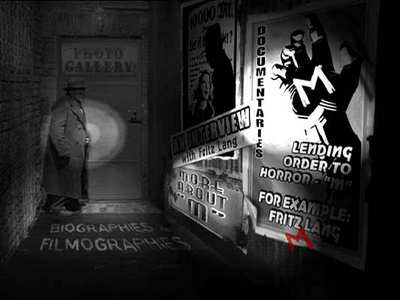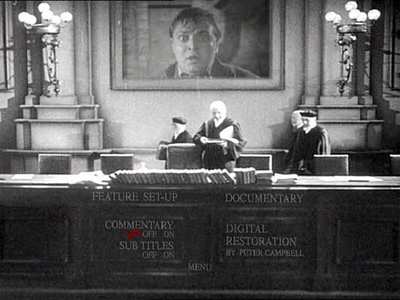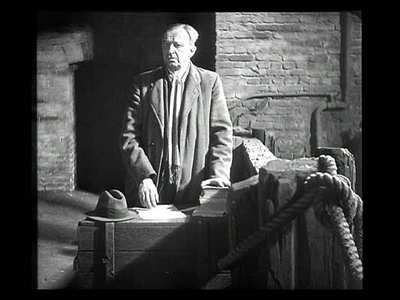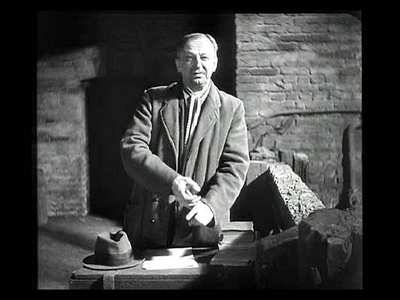Review of M (Special Edition)
Introduction
"You come strolling through the town like Peter Lorre contemplating a crime…"
Fans of Hollywood film noir better remember Peter Lorre as the generally snivelling villain in Casablanca teamed with Sidney Greenstreet. Before Hollywood fame the film that started it all for Lorre was `M`. His portrayal of the crazed child murderer in this 1931 German film was the first major role for this Hungarian born actor.
So to, for the Director Fritz Lang. Teaming up with a small independent film company, Nero films, allowed him complete artistic freedom. Because or maybe despite that, he produced a radical and topical film that dealt with the very difficult subject of child murder and the death penalty.
Voted as the top film ever made in a country that has been tainted with the products of Nazi propaganda, M has been given a complete and very expensive makeover. However the words do not do it justice and if you are interested in the subject of film restoration there are some useful documentaries included on the disc.
The treatment given to the film was to unearth the original print cut to 111 minutes before it was cut down further for commercial reasons. Several prints and the original negative were used and although digital technology is very much to the forefront it is the loving and careful human touch that was vital.
Fritz Lang wanted to put his case against capital punishment by using an example of the worst and most unforgivable crime, that of child murder. Lang and his then wife collaborated on the script and he was introduced to Peter Lorre who would become the pop-eyed maniacal killer.
The film begins with children playing in the yard of some flats. They are singing a popular song about the bogeyman coming to get them one by one. One of the women in the flats shouts at them to stop. We follow her up the stairs to the top flat where she hands a basket of washing to the woman there who is waiting for her daughter to come home from school. The child never arrives and her mother`s poignant cries echo through the empty stairwell. The police are baffled and the resultant crackdown on the criminal classes results in the local warlords decide to take the initiative. The beggars association keep watch and spot the suspect talking to a little girl. They mark `M` in chalk on his back and he is chased through the streets.
According to the documentary `M` was not a great critical or box office success.
There is very little violence in this film and no violence towards children is shown.

Video
Prepare to be shocked as the film is in black and white. That is to put it too simply as the film is in many shades and the careful restoration has produced a very good picture with a great reduction in grain and damage. It has not been prettified and constraints of time, money and the available source material leave a veneer of age on it. It is in its original ratio of 1:19, which is an almost square picture. Previous incarnations have been 6:3 resulting in heads being severed at crucial moments.
There are some interesting techniques here that we probably take for granted in modern cinema. Lang uses blank screens, which is very disconcerting. He has fluid visual links between scenes. Lang was a director of silent films and sound had only been introduced in 1927 with the result that productions became more static and noisy for a while before the sound technology caught up. If you watch this film with the sound turned down it could pass as silent.
Although it looks like it was shot on location the entire film was made on the lot.
The film is stacked with memorable and possibly familiar images if you enjoy film history. The most poignant is where the child`s ball rolls into shot and her balloon snags on power wires as off-camera she is murdered.

Audio
As above the sound is used to maximum effect but sparingly and the peculiarity of this film is indeed the lack of sound.
The opening is silent which the singing of the repetitious rhyme then breaks.
Like the visuals, sound is often used to link scenes together. Narration by the Police Chief over the forensic investigation is used to enhance the documentary style.
There is no music soundtrack. One was added for the last cinematic release in 1960 because they though modern audiences couldn`t cope without it. The only music is the murderer whistling Greig`s `Hall of the Mountain King` Suite from Peer Gynt. Lang himself provided the whistling.
Sound reproduction on the feature is good and clear. It is in German with English subtitles.
The sound quality on the interview with Lang is not so good and subtitles would have been a generous addition here.

Features
Disc One
Full-length audio commentary
The commentary is by Martin Koeber who introduces sections by others.
There are some interesting anecdotes and detail about the restoration project.
Some overlap with other sections. Mainly for scholars.
Restoration
Some detail about how they managed to restore the film-Peter Campbell.
This does go into quite close detail and is a fascinating insight into the art and science of it all.
Disc two
Interview Peter Bogdanovich
Wide-ranging excerpts with introduction to each segment by Martin Koeber. It is all right but I occasionally lost the thread with no visuals to refer to and subtitles would have been useful as Lang`s accent and the sound quality occasionally confounded my ears.
Documentary
Fritz Lang interviewed in Germany some years ago. It is in German with subtitles. This is absorbing and adds some sharp historical context especially in relation to his departure from Germany. He speaks so matter of factly about his interview with Goebbels, the offer of being Head of all national film production and his growing realisation that he had to leave Germany that day. It is this historically content that adds an extra dimension to M. It has been the subject of great debate about how much of the film attempts to warn about the danger of the criminal classes (National Socialism) taking control.
Visual Essay-M: Lending Order to Horror By R. Dixon Smith
An excellent summation of Lang`s work on M putting into historical context and adding more detail about the film and its background.
It is important both visually and in terms of content and is a thoughtful addition to the disc.
Film Restoration of M
Martin Koeber relates the painstaking work of restoring the classic to the original director`s cut.
Photo Gallery
Presented in slideshow form-on set photos, publicity
Storyboard to final sequence-this has various scenes from the film with artwork used to construct the set on the same screen.
Biographies and Filmography of Peter Lorre, Fritz Lang and Gustaf Grundgens-who played Shranker, the criminal boss.
The menu access deserves a mention here as it adds to the enjoyable experience. Although curiously it uses music, which is not in the film, overlaid. I am assuming that they have used further music from Peer Gynt.
The DVD case is annoying as the chapters and contents are hidden behind the second disc. So to read it you need to take the disc out, not very clever.

Conclusion
A chilling look at a society as it collapses in on itself. The Weimar Republic is dead. The brief artistic flowering is crushed under the Nazi boot. When Lang leaves for Hollywood all his films are banned.
M contains so many memorable images and visual shorthand that it really needs to be watched several times. It still has a lot to teach the modern filmmaker. How lucky that film was invented without sound because we have some many striking images that would never been created if dialogue could have been used as an easy fill. This film does more show than tell until shortly before the end when both M and others have the chance to explain themselves. The use of sparing dialogue adds greatly to the power of the film.
With so much history attached to M, it is very difficult to cut right back to the film itself. All films reflect the society they are made in although occasionally that conclusion can be a stretch. The paranoia and fear of society in M was all too real in Germany in the 1930`s. This was one of the last films made by Lang before his self-imposed exile. He made a lot of great films in Hollywood but he always referred to M as the only one he made with no constraints.
Peter Lorre also made a lot of films in Hollywood and M defined the character he would always play. As an actor, M would haunt him in the same way that Norman Bates haunted Anthony Perkins.
This special edition is a good package with something for everyone who is interested in film as social history, the science of film preservation and a few titbits about the lead actor and director. As Peter Lorre`s performance is central to the film a biography about him would have rounded it off for me.
I enjoyed this film and the package is good value. The material has been well treated and there are only minor niggles with what I would have liked included.
Your Opinions and Comments
Be the first to post a comment!